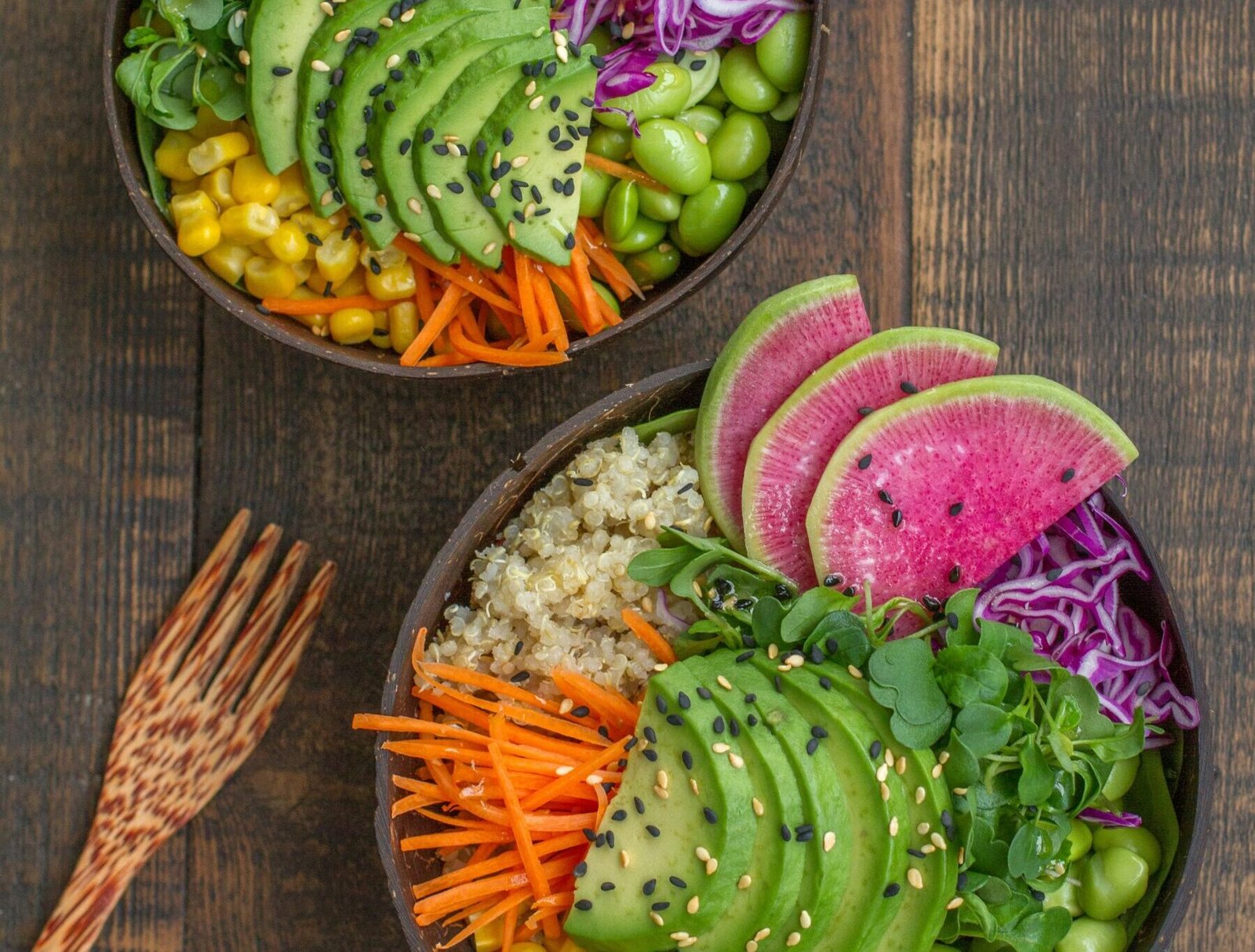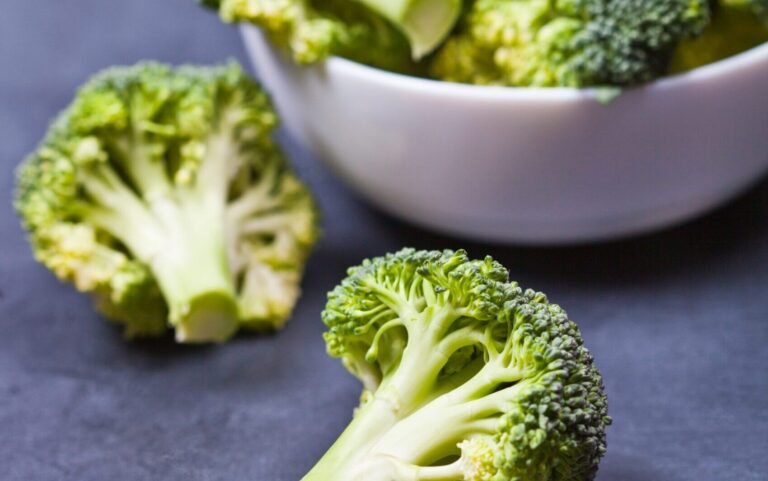Hormone Balancing Foods: 5 Essential Food Groups for Natural Wellness*

[At Lefiano, our content is meticulously researched and reviewed against reputable scientific sources to ensure accuracy.]
Wellness is not built in a single dramatic gesture. It’s constructed quietly, intentionally, through the small daily choices we make about how we nourish ourselves. Among these choices, few are as foundational as the foods we select to fuel our bodies. What you eat directly influences your hormonal health, that intricate system of chemical messengers that quietly orchestrates everything from your energy and mood to your reproductive function and metabolism.*
But when you begin researching hormone balancing foods, the information can feel overwhelming, contradictory, or needlessly restrictive. At Lefiano, we believe in a different approach: one that is grounded in science, focused on addition rather than restriction, and above all, sustainable for real life. This comprehensive guide explores five powerful food groups that research suggests can support your body’s natural hormonal equilibrium.* We’ll give you the facts, cite the science, and empower you to make informed nutritional decisions for your wellness journey.*
Understanding the Deep Connection Between Diet and Your Hormones
Before we explore specific foods, it’s essential to understand how profoundly your diet influences your hormonal landscape. Recent research has fundamentally shifted how we understand this relationship.
Nutrients serve as precursors to crucial molecules involved in bodily reactions, wielding significant influence over physiological processes and biochemical pathways, including those governing hormones.* In fact, emerging research suggests that circulating substrates derived from food have specific direct and indirect actions to activate receptors and signaling pathways, meaning food itself can be understood as a collection of signaling molecules with hormone-like actions.*
This is not simply about “calories in, calories out.” Your diet influences hormones through multiple interconnected pathways:*
Blood Sugar Regulation – Foods with varying glycemic loads create different insulin responses, which in turn affect other hormones including cortisol, estrogen, and testosterone.* Research shows that regular exercise and nutritious diets rich in protein and fiber help naturally balance hormones by improving insulin sensitivity.*
Providing Building Blocks – All steroid hormones, including estrogen, testosterone, and cortisol, are derived from cholesterol, which is obtained primarily from diet.* Without adequate dietary fats, your body cannot manufacture these essential hormones.*
Gut Microbiome Communication – Perhaps most fascinating, your gut bacteria actively participate in hormone metabolism, particularly estrogen.* Research has identified a functional collection of bacterial genes called the “estrobolome” that directly influences circulating estrogen levels through enzyme production.* We’ll explore this crucial connection further.
Inflammation Management – Chronic inflammation and oxidative stress associated with poor dietary patterns can negatively impact fertility and hormonal balance, contributing to conditions like PCOS and disrupted endocrine function.*
A 2024 comprehensive review examining dietary patterns and hormonal balance emphasized that understanding the intricate relationship between nutrition, hormonal balance, and gender-specific factors is crucial for developing targeted interventions to improve metabolic and endocrine health.*
With this foundation established, let’s explore the five essential food groups that research suggests can support your hormonal wellness.*
1. Cruciferous Vegetables: Nature’s Estrogen Metabolism Support*
If there’s one food group that consistently appears in research on hormone balance, it’s the Brassicaceae family, commonly known as cruciferous vegetables. This includes broccoli, kale, cauliflower, Brussels sprouts, cabbage, collard greens, and bok choy.
Why They’re Powerful for Hormone Balance
Cruciferous vegetables contain unique sulfur-containing compounds called glucosinolates. The predominant glucosinolate in many common Brassica vegetables is glucobrassicin, which is hydrolyzed to indole-3-carbinol (I3C).* In the acidic environment of the stomach, I3C readily undergoes acid condensation, primarily forming 3,3′-diindolylmethane (DIM).*
This natural two-step conversion is where the magic happens. Supplementation with crucifer-derived phytochemicals indole-3-carbinol (I3C) and 3,3′-diindolylmethane (DIM) has been an area of active interest due to their role in estrogen metabolism.*
What The Science Shows
Research in humans investigating short-term oral exposure to I3C from cruciferous vegetables found that consuming 6-7 mg/kg/day over 7 days increased estradiol 2-hydroxylation by approximately 50%, demonstrating measurable changes in how the body processes estrogen.
This matters because not all estrogen metabolites are created equal. Both I3C and DIM modulate estrogen metabolism in animals and humans to favor the formation of anti-proliferative 2-hydroxyestrone (2-OHE) over the proliferation-inducing 16α-hydroxyestrone.* This shift toward more favorable estrogen metabolites is one mechanism by which cruciferous vegetables may support hormonal balance.*
How Much Should You Eat?
Research examining glucobrassicin consumption found that the association between glucobrassicin dose and urinary DIM was strong and positive, with the majority of DIM excreted in the first 12 hours after vegetable consumption. While individual needs vary, nutrition experts suggest aiming to eat 1-2 cups of cruciferous vegetables daily to take full advantage of their health benefits.
Practical Tips:
- Lightly steam or sauté to retain beneficial compounds while improving digestibility
- Add raw kale to smoothies for a nutrient boost
- Roast Brussels sprouts with olive oil and garlic as a delicious side dish
- Include shredded cabbage in tacos or as a crunchy salad base
- Make cauliflower rice as a versatile, low-carb foundation
For those seeking more concentrated support, our Lefiano DIM Ultra provides 350mg of diindolylmethane along with broccoli extract to complement a diet rich in whole foods.* Learn More About DIM Ultra
2. Healthy Fats: The Essential Building Blocks of Hormone Production*
This might surprise you, but fat is not your enemy when it comes to hormonal health. In fact, it’s absolutely essential.
Why Dietary Fat Matters
All steroid hormones, including estrogen, progesterone, testosterone, and cortisol, are synthesized from cholesterol.* Without adequate dietary fat intake, your body cannot produce the cholesterol needed as the fundamental building block for these hormones.* This is why extremely low-fat diets can sometimes disrupt menstrual cycles and hormonal function.*
The Power of Omega-3 Fatty Acids
Not all fats are created equal. Omega-3 fatty acids are constituents of cell membranes throughout the body and are precursors of locally produced hormones called eicosanoids, which are important in the prevention and treatment of various diseases, especially in women.*
The two most researched omega-3 fatty acids are EPA (eicosapentaenoic acid) and DHA (docosahexaenoic acid), found primarily in fatty fish, while ALA (alpha-linolenic acid) is found in plant sources like flaxseeds, chia seeds, and walnuts.*
How Omega-3s Support Hormonal Balance
EPA and DHA are capable of partly inhibiting many aspects of inflammation, including production of inflammatory eicosanoids, inflammatory cytokines, and promoting the production of anti-inflammatory and inflammation-resolving mediators called resolvins, protectins, and maresins.*
This anti-inflammatory action is crucial because chronic inflammation and oxidative stress can negatively impact fertility and hormonal balance, contributing to conditions like PCOS.* Additionally, omega-3 fatty acids’ mechanism underlying dysmenorrhea (painful periods) involves restoring a balanced ratio between anti-inflammatory, vasodilator eicosanoids derived from omega-3 and pro-inflammatory, vasoconstrictor eicosanoids derived from omega-6 fatty acids.*
Best Plant-Based Sources of Healthy Fats:
- Omega-3 Rich: Flaxseeds, chia seeds, hemp seeds, walnuts, edamame
- Monounsaturated Fats: Avocados, extra virgin olive oil, almonds, cashews, hazelnuts
- Whole Food Fats: Coconut, olives, tahini (sesame paste), natural nut butters
Practical Application:
- Add 1-2 tablespoons of ground flaxseed to smoothies or oatmeal daily
- Include a small handful of walnuts or other nuts as a daily snack
- Use extra virgin olive oil for cooking and dressings
- Include half an avocado with meals for sustained energy
- Sprinkle walnuts or almonds on salads or as snacks
3. Gut-Nourishing Foods: The Estrobolome Connection*
This might be the most fascinating and least understood area of hormone nutrition research. Your gut microbiome doesn’t just digest food; it actively participates in regulating your hormones, particularly estrogen.
Understanding the Estrobolome
The human gut microbiota regulates estrogen metabolism through the “estrobolome,” the collection of bacterial genes that encode enzymes like β-glucuronidases and β-glucosidases.* These enzymes deconjugate and reactivate estrogen, influencing circulating levels.*
Here’s how it works: After estrogen is processed by your liver, it’s sent to your intestines for elimination. However, bacterial β-glucuronidase enzymes within the gastrointestinal tract can cleave the glucuronic acid from conjugated estrogen, reactivating it and allowing it to be recirculated throughout the body via enterohepatic circulation.*
Why This Matters
Alterations in gut microbiota composition and estrobolome function have been associated with estrogen-related diseases like breast cancer, endometrial cancer, and polycystic ovarian syndrome (PCOS), likely due to dysregulated estrogen signaling partly contributed by microbial impacts on estrogen metabolism.*
A healthy, diverse gut microbiome helps maintain optimal estrogen balance.* Conversely, reduction in gut microbiome diversity as a result of dysbiosis and inflammation reduces β-glucuronidase activity, resulting in decreased deconjugation of estrogen and subsequent decrease in circulating estrogens, which may lead to hypoestrogenic pathologies.*
Foods That Support a Healthy Gut Microbiome
High-Fiber Foods:
- Lentils, chickpeas, black beans (excellent sources of prebiotic fiber)
- Oats and oat bran (contain beta-glucan fiber)
- Berries (raspberries, blackberries, blueberries)
- Leafy greens (spinach, kale, Swiss chard)
- Artichokes, asparagus, onions, garlic (rich in inulin)
Fiber serves multiple functions: it feeds beneficial gut bacteria, supports regular elimination of excess hormones, and helps stabilize blood sugar.* Research suggests eating several high-fiber foods each day, such as avocados, beans, and nuts.*
Probiotic-Rich Fermented Foods:
- Plant-based yogurt (look for live active cultures)
- Kefir (dairy or coconut-based)
- Sauerkraut and kimchi (unpasteurized for live bacteria)
- Miso paste
- Tempeh
- Kombucha
These foods introduce beneficial bacteria directly into your digestive system, supporting microbial diversity and healthy estrobolome function.*
4. Quality Protein: Blood Sugar Balance and Hormone Synthesis*
Protein is essential for hormone production and one of the most powerful tools for blood sugar stabilization, which in turn profoundly affects your hormonal balance.
Why Protein Matters
Protein provides the amino acids necessary for synthesizing peptide hormones, neurotransmitters, and enzymes.* More importantly in the context of hormone balance, experts recommend eating a minimum of 25-30 grams of protein per meal to help stabilize blood sugar and support healthy insulin function.*
The Blood Sugar-Hormone Connection
Insulin is a hormone that allows cells to take up sugar from your bloodstream to use for energy.* However, if you have insulin resistance, your cells may not effectively react to insulin, a condition that is a risk factor for diabetes, obesity, heart disease, and hormonal imbalances.*
When blood sugar spikes and crashes throughout the day, it creates a hormonal cascade.* High blood sugar triggers insulin release, which can increase androgen production and inflammation.* This is particularly relevant for conditions like PCOS, where insulin resistance plays a central role in hormonal dysfunction.*
Including adequate protein with every meal helps create a slow, steady release of glucose into your bloodstream, preventing dramatic insulin spikes and supporting more stable hormone levels throughout the day.*
Best Plant-Based Protein Sources for Hormone Balance:
- Legumes: Lentils, chickpeas, black beans, kidney beans, pinto beans (also provide fiber)
- Soy Products: Organic tofu, tempeh, edamame (contain beneficial phytoestrogens)
- Quinoa: A complete protein containing all essential amino acids
- Hemp seeds: 10g protein per 3 tablespoons
- Spirulina: Nutrient-dense algae with high protein content
- Nuts and nut butters: Almonds, cashews, walnuts, natural peanut or almond butter
- Seitan: Made from wheat gluten, high in protein
- Nutritional yeast: Adds protein plus B-vitamins to meals
Practical Application: Build each meal around a quality protein source to maintain stable energy and blood sugar throughout the day.* This simple strategy can have a profound impact on how you feel, your energy levels, and your overall hormonal wellness.*
5. Mineral-Rich Seeds: Targeted Nutrient Support for Hormones*
Don’t underestimate the power of these tiny nutritional powerhouses. Specific seeds provide concentrated amounts of minerals and compounds that research suggests can support hormonal health.*
Flaxseeds: Lignans for Estrogen Modulation*
Flaxseeds are rich in lignans, plant compounds that can help modulate estrogen activity in the body.* Lignans are phytoestrogens, meaning they have a weak estrogen-like effect and can bind to estrogen receptors.* This may help support a healthy balance of estrogen signaling in the body.*
Flaxseeds are also an excellent source of ALA omega-3 fatty acids and fiber, making them a triple threat for hormone support.* Always consume ground flaxseeds (not whole) to access the nutrients, as whole seeds pass through the digestive system undigested.
Pumpkin Seeds: Zinc for Endocrine Function*
Pumpkin seeds are one of the best plant-based sources of zinc, a mineral that plays a crucial role in hormone production and immune function.* Zinc is particularly important for supporting healthy testosterone levels in both men and women, and adequate zinc status is necessary for proper endocrine function throughout the body.*
Sesame Seeds and Tahini: Rich in calcium, magnesium, and lignans, sesame seeds support bone health and provide additional phytoestrogen compounds.
Chia Seeds: High in omega-3 ALA, fiber, and minerals. When soaked, they form a gel that can support digestive health and provide sustained energy.
How to Use Seeds:
- Add 1-2 tablespoons of ground flaxseed to smoothies, oatmeal, or yogurt
- Sprinkle pumpkin seeds on salads or roasted vegetables
- Use tahini (sesame seed paste) as a base for dressings
- Make chia seed pudding as a nutrient-dense breakfast or snack
- Blend seeds into homemade energy balls
The Holistic Picture: Beyond Individual Foods
While we’ve explored five powerful food groups, it’s crucial to emphasize that true hormonal wellness requires a comprehensive approach that goes beyond nutrition alone.
Recognizing nutrition as a modifiable factor in preventing adverse reproductive outcomes is crucial.* A balanced diet rich in essential nutrients plays a pivotal role in maintaining hormonal equilibrium, preventing reproductive disorders, and safeguarding fertility.* Embracing a holistic approach that integrates nutrition with healthy lifestyle practices is instrumental in promoting reproductive wellbeing.*
Additional Lifestyle Factors for Hormone Balance:
Quality Sleep – Aim for 7-9 hours nightly.* Sleep deprivation disrupts cortisol, growth hormone, leptin, and ghrelin.*
Stress Management – Chronic stress elevates cortisol, which can suppress reproductive hormones and disrupt thyroid function.* Incorporate meditation, yoga, time in nature, or any practice that genuinely helps you decompress.
Regular Movement – Physical activity strongly influences hormonal health by improving blood flow to muscles and increasing hormone receptor sensitivity, meaning it enhances the delivery of nutrients and hormone signals.*
Limiting Endocrine Disruptors – Reduce exposure to chemicals in plastics, personal care products, and pesticides that can interfere with hormone signaling.*
Supporting Men’s Hormonal Health
These principles aren’t exclusive to women. Men’s hormonal health is equally influenced by nutrition.* Healthy fats support testosterone production, zinc is crucial for male reproductive health, and stable blood sugar helps prevent insulin-related disruptions to the testosterone-estrogen balance.* Cruciferous vegetables support healthy estrogen metabolism in men just as they do in women.*
Simple Meal Ideas Combining Hormone-Supporting Foods
Breakfast: Hormone-Balancing Smoothie Bowl
- Base: Blended kale, frozen berries, plant-based yogurt, ground flaxseed
- Toppings: Sliced banana, pumpkin seeds, walnuts, chia seeds, hemp hearts
Lunch: Nourishing Buddha Bowl
- Base: Quinoa or brown rice
- Vegetables: Roasted broccoli, shredded cabbage, grated carrot
- Protein: Chickpeas or baked tofu
- Healthy Fat: Sliced avocado
- Dressing: Tahini-lemon dressing with olive oil
Dinner: Balanced Plate
- Protein: Lentil dal or marinated baked tofu
- Vegetables: Sautéed Brussels sprouts and leafy greens with garlic
- Complex Carb: Roasted sweet potato or brown rice
- Healthy Fat: Drizzle of olive oil, sprinkle of pumpkin seeds
Snack Ideas:
- Apple slices with almond butter and ground flaxseed
- Raw vegetables with hummus
- A small handful of walnuts and berries
- Chia seed pudding made with coconut milk
Where Lefiano Fits Into Your Hormone-Balancing Journey
We fundamentally believe that real, whole foods are the cornerstone of hormonal wellness. No supplement can replace a nourishing, balanced diet rich in the food groups we’ve discussed.
That said, we also understand that modern life makes it challenging to consume optimal amounts of specific nutrients every single day. For individuals specifically interested in targeted support for healthy estrogen metabolism, our Lefiano DIM Ultra provides:*
- 350mg of DIM – A potent dose aligned with clinical research on hormone balance support*
- BioPerine® – Clinical research demonstrating enhanced nutrient absorption*
- Broccoli Extract – A natural source of glucosinolates from cruciferous vegetables*
This formula is designed to complement, not replace, a diet rich in hormone-supporting whole foods.*
BioPerine® is a registered trademark of Sabinsa Corporation, USA.
Learn More About Lefiano’s DIM Ultra
The Takeaway: Empowered, Informed Nutrition Choices
Supporting your hormonal health through nutrition doesn’t require perfection, expensive superfoods, or restrictive elimination diets. It requires consistency with foundational principles:
✓ Eat cruciferous vegetables regularly for estrogen metabolism support* ✓ Include healthy fats daily to provide hormone building blocks* ✓ Nourish your gut microbiome with fiber and fermented foods* ✓ Prioritize quality protein with each meal for blood sugar stability* ✓ Incorporate mineral-rich seeds for targeted nutrient support*
Recent research emphasizes that understanding the intricate relationship between nutrition, hormonal balance, and individual factors is crucial for developing effective approaches to improve metabolic and endocrine health.*
Your body possesses remarkable wisdom and an inherent drive toward balance. By providing it with the nutritional tools it needs through thoughtful food choices, you support its natural capacity for hormonal equilibrium and overall wellness.*
For more evidence-based guidance on supporting your health from the inside out, explore our comprehensive guide: What is DIM? A Complete Guide to Hormone Balance, or learn more about Our Brand Story and Commitment to Transparency.
Medical Disclaimer
Disclaimer: The information provided on this site is for educational purposes only and is not intended as a substitute for professional medical advice, diagnosis, or treatment. The statements on this page have not been evaluated by the Food and Drug Administration (FDA). Always seek the advice of your physician or other qualified health provider with any questions you may have regarding a medical condition. Never disregard professional medical advice or delay in seeking it because of something you have read on this website. Our product, DIM Ultra, is a dietary supplement and is not intended to diagnose, treat, cure, or prevent any disease.
References
- Calcaterra, V., Verduci, E., Stagi, S., & Zuccotti, G. (2024). How the intricate relationship between nutrition and hormonal equilibrium significantly influences endocrine and reproductive health in adolescent girls. Frontiers in Nutrition, 11, 1337328. https://doi.org/10.3389/fnut.2024.1337328
- Mazza, E., Troiano, E., Ferro, Y., Lisso, F., Tosi, M., Turco, E., Pujia, R., Montalcini, T., & Pujia, A. (2024). Obesity, Dietary Patterns, and Hormonal Balance Modulation: Gender-Specific Impacts. Nutrients, 16(11), 1629. https://doi.org/10.3390/nu16111629
- Ryan, K. K., & Seeley, R. J. (2013). Food as a Hormone. Science, 339(6122), 918-919. https://doi.org/10.1126/science.1234062
- Institute for Functional Medicine. (2024). Nutrition and Impacts on Hormone Signaling. Retrieved October 2025 from https://www.ifm.org/articles/nutrition-impacts-hormone-signaling
- MDPI. (2024). Special Issue: The Relationship between Diet and Hormones. Nutrients Journal. https://www.mdpi.com/journal/nutrients/special_issues/diet_hormones
- Delage, B., & Ho, E. (2025, March 7). Cruciferous Vegetables. Linus Pauling Institute, Oregon State University. https://lpi.oregonstate.edu/mic/food-beverages/cruciferous-vegetables
- Delage, B., & Ho, E. (2025, March 7). Indole-3-Carbinol. Linus Pauling Institute, Oregon State University. https://lpi.oregonstate.edu/mic/dietary-factors/phytochemicals/indole-3-carbinol
- Auborn, K. J., Fan, S., Rosen, E. M., Goodwin, L., Chandraskaren, A., Williams, D. E., Chen, D., & Carter, T. H. (2003). Indole-3-carbinol is a negative regulator of estrogen receptor-alpha signaling in human tumor cells. The Journal of Nutrition, 130(12), 2927-2931. https://doi.org/10.1093/jn/130.12.2927
- Bradlow, H. L., Michnovicz, J., Telang, N. T., & Osborne, M. P. (1991). Altered estrogen metabolism and excretion in humans following consumption of indole-3-carbinol. Nutrition and Cancer, 16(1), 59-66. https://doi.org/10.1080/01635589109514139
- Higdon, J. V., Delage, B., Williams, D. E., & Dashwood, R. H. (2007). Cruciferous vegetables and human cancer risk: epidemiologic evidence and mechanistic basis. Pharmacological Research, 55(3), 224-236. https://doi.org/10.1016/j.phrs.2007.01.009
- Reed, G. A., Arneson, D. W., Putnam, W. C., Smith, H. J., Gray, J. C., Sullivan, D. K., Mayo, M. S., Crowell, J. A., & Hurwitz, A. (2006). Single-dose and multiple-dose administration of indole-3-carbinol to women: pharmacokinetics based on 3,3′-diindolylmethane. Cancer Epidemiology, Biomarkers & Prevention, 15(12), 2477-2481. https://doi.org/10.1158/1055-9965.EPI-06-0396
- Fujioka, N., Ransom, B. W., Carmella, S. G., Upadhyaya, P., Lindgren, B. R., Roper-Batker, A., Hatsukami, D. K., Fritz, V. A., Rohwer, C., & Hecht, S. S. (2016). Harnessing the Power of Cruciferous Vegetables: Developing a Biomarker for Brassica Vegetable Consumption Using Urinary 3,3′-Diindolylmethane. Cancer Prevention Research, 9(10), 788-793. https://doi.org/10.1158/1940-6207.CAPR-16-0136
- Kumari, N., Kumari, R., Dua, A., Singh, M., Kumar, R., Singh, P., Duyar-Ayerdi, S., Pradeep, S., Ojesina, A. I., & Kumar, R. (2024). From Gut to Hormones: Unraveling the Role of Gut Microbiota in (Phyto)Estrogen Modulation in Health and Disease. Molecular Nutrition & Food Research, 68(6), e2300688. https://doi.org/10.1002/mnfr.202300688
- Larnder, E. J., Brauer, P. M., Bernstein, C. N., Bruce, W. R., Hay, K., Li, S. S., & Parrish, A. (2025). The estrobolome: Estrogen-metabolizing pathways of the gut microbiome and their relation to breast cancer. International Journal of Cancer, 157(4), 1015-1034. https://doi.org/10.1002/ijc.35427
- Baker, J. M., Al-Nakkash, L., & Herbst-Kralovetz, M. M. (2017). Estrogen-gut microbiome axis: Physiological and clinical implications. Maturitas, 103, 45-53. https://doi.org/10.1016/j.maturitas.2017.06.025
- Plottel, C. S., & Blaser, M. J. (2011). Microbiome and malignancy. Cell Host & Microbe, 10(4), 324-335. https://doi.org/10.1016/j.chom.2011.10.003
- Ervin, S. M., Li, H., Lim, L., Roberts, L. R., Liang, X., Mani, S., & Redinbo, M. R. (2019). Gut microbial β-glucuronidases reactivate estrogens as components of the estrobolome that reactivate estrogens. Journal of Biological Chemistry, 294(49), 18586-18599. https://doi.org/10.1074/jbc.RA119.010950
- Ruiz-Núñez, B., Pruimboom, L., Dijck-Brouwer, D. A., & Muskiet, F. A. (2013). Lifestyle and nutritional imbalances associated with Western diseases: causes and consequences of chronic systemic low-grade inflammation in an evolutionary context. Journal of Nutritional Biochemistry, 24(7), 1183-1201. https://doi.org/10.1016/j.jnutbio.2013.02.009
- Burdge, G. C., & Calder, P. C. (2005). Conversion of alpha-linolenic acid to longer-chain polyunsaturated fatty acids in human adults. Reproduction Nutrition Development, 45(5), 581-597. https://doi.org/10.1051/rnd:2005047
- Calder, P. C. (2013). Omega-3 polyunsaturated fatty acids and inflammatory processes: nutrition or pharmacology? British Journal of Clinical Pharmacology, 75(3), 645-662. https://doi.org/10.1111/j.1365-2125.2012.04374.x
- Calder, P. C. (2017). Omega-3 fatty acids and inflammatory processes: from molecules to man. Biochemical Society Transactions, 45(5), 1105-1115. https://doi.org/10.1042/BST20160474
- Sohrabi, N., Kashanian, M., Ghafoori, S. S., & Malakouti, S. K. (2013). Evaluation of the effect of omega-3 fatty acids in the treatment of premenstrual syndrome: “a pilot trial”. Complementary Therapies in Medicine, 21(3), 141-146. https://doi.org/10.1016/j.ctim.2013.01.001
- Harvard T.H. Chan School of Public Health. (2023). Fats and Cholesterol. The Nutrition Source. https://www.hsph.harvard.edu/nutritionsource/what-should-you-eat/fats-and-cholesterol/
- Harvard T.H. Chan School of Public Health. (2023). The Nutrition Source: Protein. https://www.hsph.harvard.edu/nutritionsource/what-should-you-eat/protein/
- Mayo Clinic. (2023). Dietary fats: Know which types to choose. Mayo Clinic Health Information. https://www.mayoclinic.org/healthy-lifestyle/nutrition-and-healthy-eating/in-depth/fat/art-20045550
- Cleveland Clinic. (2023). Hormonal Imbalance: Causes, Symptoms & Treatment. Cleveland Clinic Health Library. https://my.clevelandclinic.org/health/diseases/22673-hormonal-imbalance
- National Institutes of Health Office of Dietary Supplements. (2024). Omega-3 Fatty Acids: Fact Sheet for Health Professionals. https://ods.od.nih.gov/factsheets/Omega3FattyAcids-HealthProfessional/
- National Institutes of Health Office of Dietary Supplements. (2024). Zinc: Fact Sheet for Health Professionals. https://ods.od.nih.gov/factsheets/Zinc-HealthProfessional/
- Healthline. (2024). 12 Natural Ways to Balance Your Hormones. Evidence-based health information. https://www.healthline.com/nutrition/balance-hormones
- SingleCare. (2024). Hormone balancing diet: 9 foods to prioritize. Evidence-based nutrition guidance. https://www.singlecare.com/blog/hormone-balancing-diet/



